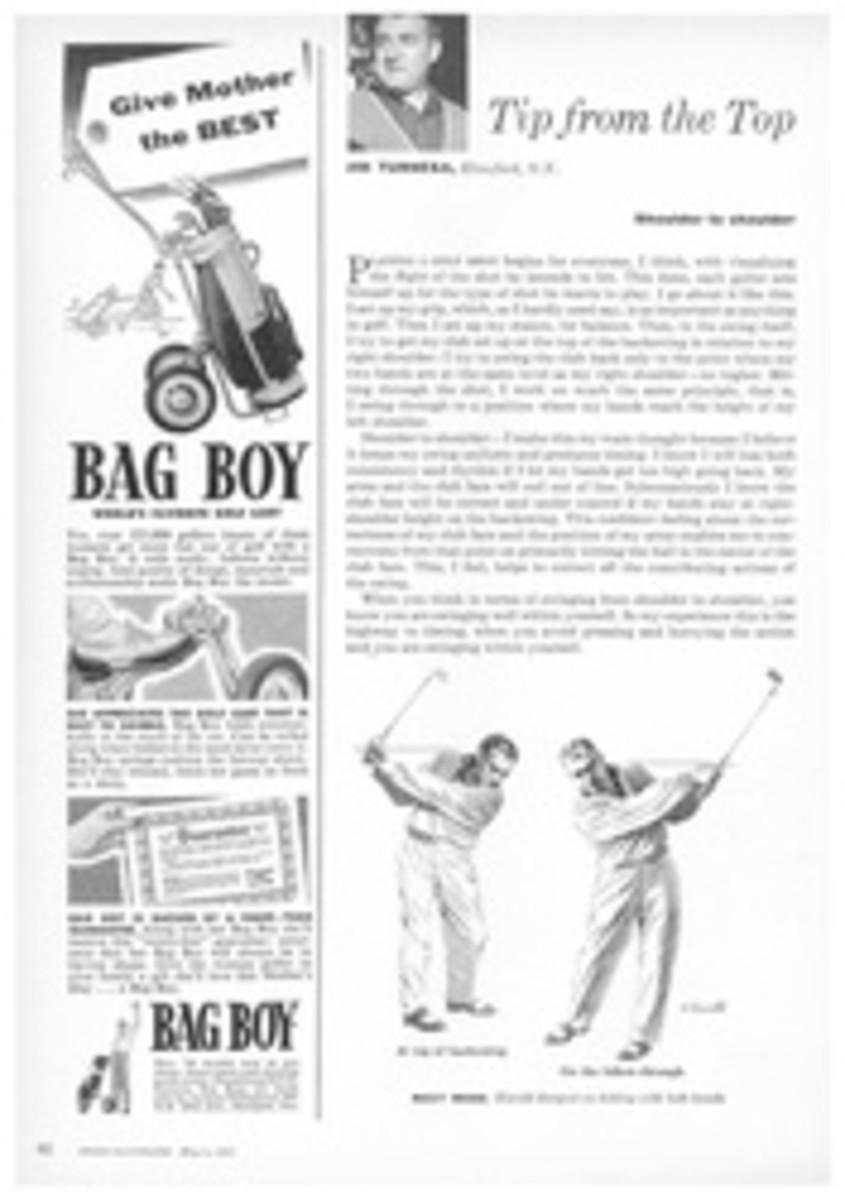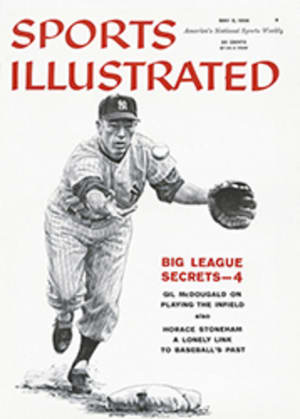
Meet the magnificent monsters
This year it's come: the age of the jet racing boat. The first magnificent, sleek monsters of the new age now make their public debut on this page. At the upper right, poised like a praying mantis, is the pontooned hull planned by Seattle's whiz hydroplane designer, Ted Jones. The wide, powerful hull below it is being built in Detroit, proving that the hydro men of the Auto City are still seized with a fervent ambition for a boat faster than any Seattle has, come jets or whatever.
The huge boats represent fairly different approaches to the problem of high speed on water. The Seattle boat has made use of the pontoon design of the world's first jet, Englishman Don Campbell's Bluebird. The Detroiters have taken the possibly trickier course of keeping their hull in one piece. First of all, both boats are aiming for the world straightaway record of 239.07 mph, now held by Bluebird. Secondly, since they are also engineered to take the corners of a race course (Bluebird is not), they are aimed at each other. They may even get together for an experimental duel during one of the regular unlimited hydroplane meets this year.
Detroiters started thinking jets less than a minute after they heard that Ted Jones (whose boats have been the major source of pain to the Detroit unlimited class hydro fleet) was monkeying around with a jet engine. Lee Shoenith; Detroit's leading owner, got together with Les Staudacher, the leading resident designer, and plans for a Detroit jet began to cook.
"I've been in orbit since I got into the jet project," said Staudacher recently. "This is a great dream, and it says in the fine print that I get the privilege of giving it the first ride."
Staudacher has unbounded enthusiasm for the jet, because he sees a fine time coming when there will be a regular swarm of jets in the land. They will have to race in a separate class from the unlimited propeller hydros, but jets will easily race faster (180 miles an hour plus) for half the cost. Currently the minimum bill for an unlimited is about $30,000. Jets do not have the expensive propellers, gearboxes, struts, shafts, and oil coolers that are continually busting up on propellered craft. Best of all, the jet Staudacher uses can be picked up for junk prices (around $350).
"It won't be long," says Staudacher, happy at the thought of all the new hulls to be built, "before all the hydroplanes go to jet power."
Staudacher ought to know what he is talking about. The Staudacher woodworking factory (main business: church pews) of Kawkawlin, Mich. has turned out 32 propeller hydros since Staudacher built My Sweetie in 1949. (My Sweetie was given by indulgent Auto Heiress Anna Dodge to her son Horace for a birthday present.) Staudacher has built to everyone's plans, including last year's best unlimited, Hawaii Kai, a most successful Jones design.
Staudacher's main problems with the jet are, first, to take care that the hurricane air stream charging at a boat going 200 to 300 miles an hour doesn't get under the hull and flip the whole works and, secondly, to make the jet maneuverable enough to race. He will keep the air out from under the hull by making her shape extremely fine forward. The steering system is still a question. Staudacher says he hopes to go to airplanelike tail fins.
The jet engine itself presents no problem, although it screams like a lost banshee and throws a considerable tail flame while warming up, according to Staudacher. As the motor settles down to a bass roar, the flame retreats inside the engine housing, so there is no chance the No. 2 man in a tight race will end up well-done.
Staudacher works out his engine—4,000 whistling, growling horsepower—just a hundred yards from the kitchen where his wife Lois prepares the family meals.
"It is awfully loud," admitted Mrs. Staudacher, who has never been over to see the engine. "Lester almost got killed the first time he started it. He had put a piece of metal in there somewhere and, when he started the engine, the metal flew right out, went through Lester's hat and put a hole in it. If it would have hit him in the head, it would have killed him."
In spite of this inauspicious start, all else seems to have been going pretty well with the Detroit boat. Staudacher plans to put her in the water by July 1.
"Then she'll go," said Staudacher. "Two hundred and fifty to three hundred in straightaway time trials," he added with an eye toward Campbell's Bluebird.
Back in Seattle, Bluebird's record is also being eyed, and very confidently, by Ted Jones. "I began thinking about the possibilities of building a jet boat a long time ago," said Jones, standing before a drawing board in the recreation room of his Lake Washington home on a recent Sunday. "It was shortly after the first time I saw pictures of a jet plane. I believe it was a classified movie at Boeing early in the war. I do remember that Mussolini was in the picture watching this plane."
Jones says that when Campbell and his friends first began to work on Bluebird in 1951 Jones gave them the benefit of considerable thought on the subject, including several rough sketches of pontoon designs.
Any good pontoon design, according to Jones, channels the air past the sides and lets it out from under the hull before it builds up dangerous pressure.
"Propeller hydros utilize the air stream under the hull to lift them off the water," said Jones. "At 250 to 300 miles an hour, we can't use this aerodynamic lift because, if we did, the boat would take right off and fly."
To illustrate his point, and to accommodate SPORTS ILLUSTRATED's request for a plan drawing of his jet, Jones spent a good part of this particular Sunday muttering and perspiring, with his drawing board set atop the bar.
In his usual Sunday at-home garb—slacks, beaten-up carpet slippers and a short-sleeved shirt which showed the arm scars from years of motorcycle and boat racing—Jones sweated through some six hours of painstaking trial-and-error drawing board work until finally at 10 p.m. he was satisfied with his output and sat down to eat some pizza and banana cream pie his daughters had made, his first meal since breakfast.
"I don't like to be one of these guys who talks and never does," he said with a wave at the finished drawing, "but this one will get built, and it will set the world straightaway record.
"And," said Jones, with a nod eastward in the direction of Detroit, "it will be a racing boat as well. Just wait."
ILLUSTRATION
RAY PIOCH
SEATTLE JET has a Duralumin hull which is 34 feet long, 12½ feet wide across pontoons and weighs 7,000 pounds. The J-47-19 engine delivers about 6,000 horsepower, and can push hull past 300 miles an hour. At top speed, the boat will touch water only on a few square inches—at end of the wedge-shaped section under stern and at tail of each pontoon. Design, by Ted Jones, is like Don Campbell's Bluebird, world's first jet.
ILLUSTRATION
RAY PIOCH
DETROIT JET has aluminum-plated mahogany plywood hull 36 feet long, 11‚Öì feet wide, and weighs 6,000 pounds. The J-35 engine puts out 4,000 horsepower, drives hull 300 miles an hour on straightaway. Stern extensions on each side are made to increase stability by putting the rear planing surfaces farther behind engine. Design is by Les Staudacher of Kawkawlin, Mich.
ILLUSTRATION
RAY PIOCH
PLANING SURFACES of Detroit boat (shown on its side) are marked in red: one on forward step, one on each stern section.
PHOTO
DETROIT DESIGNER Les Staudacher has constructed 32 hydros.
PHOTO
SEATTLE DESIGNER Ted Jones has pioneered big hydros since 1950.

